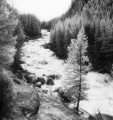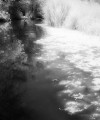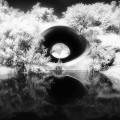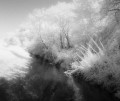Black & White Infrared Photography
Steve Zmak always liked the mystical magical ethereal look of black and white infrared film. He used Kodak’s HIE exclusively because it had the most intense effect for glowing plants and black skies at 870 nanometers. With the move away from film to digital, Kodak discontinued this product, and for a time, Zmak nearly lost all hope.
Then a friend introduced Zmak to an 87C filter. Digital camera sensors read both visible light and infrared light, and camera manufacturers place a filter over the sensor to block the infrared light and only let in the spectrum of light visible to humans, below 700 nm. An 87C filter blocks all light below 830 nm. It is opaque to the human eye. Zmak would have to setup his shot on a tripod and then screw the filter on. When only infrared light is allowed through the lens, given a long enough exposure, it will seep through the blocking filter and make an exposure on the sensor. A “long enough exposure” is 17 stops slower than the 50 ISO rating given Kodak’s HIE film. That means 4-minute exposures at f/5.6, ISO 100 in broad daylight. This made for some very challenging shooting conditions, but Zmak was able to push the surreal boundaries of the film by adding the effects of long exposures that couldn’t be done with the film. A good transitional step, but not the same as shooting with the film.
The digital move was complete when Zmak had a digital SLR camera adjusted by removing the factory infrared light blocking filter and replacing it with a 830 nm filter that blocks all human visible spectrum light and only allows in deep infrared light, and achieving an effect very similar to Kodak’s original film.
This collection reflects photos taken using all 3 methods. Assignments today are shot with the converted camera, but Zmak still carries his 87C filter for special occasions.
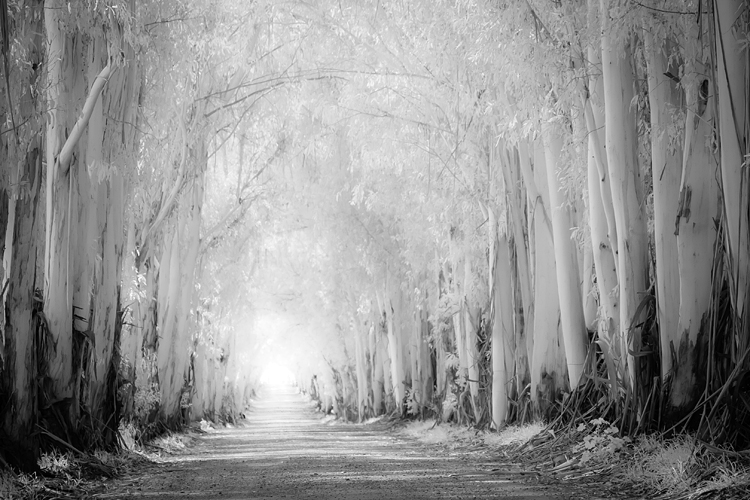
Eucalyptus tress glowing with sunlight for a cathedral in black and white infrared.






























